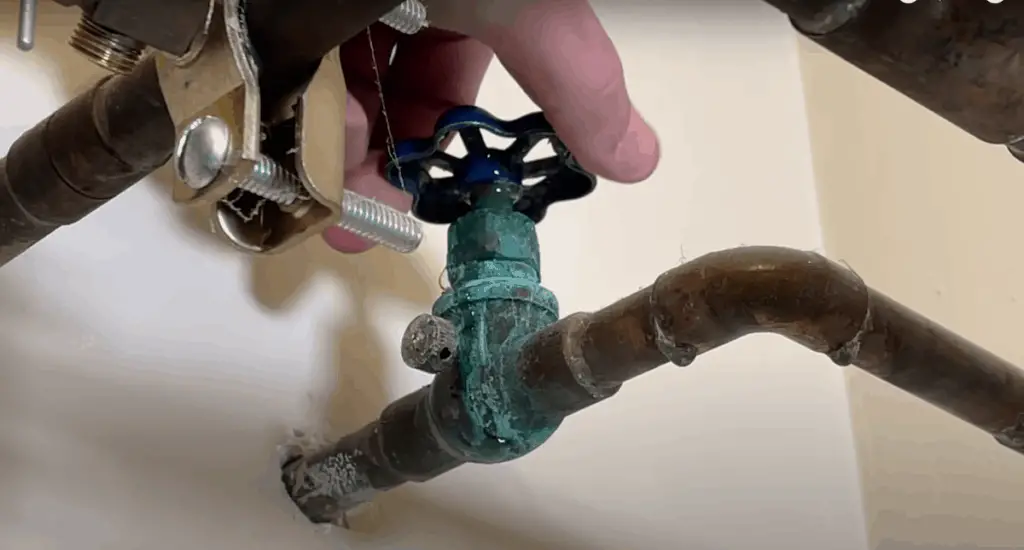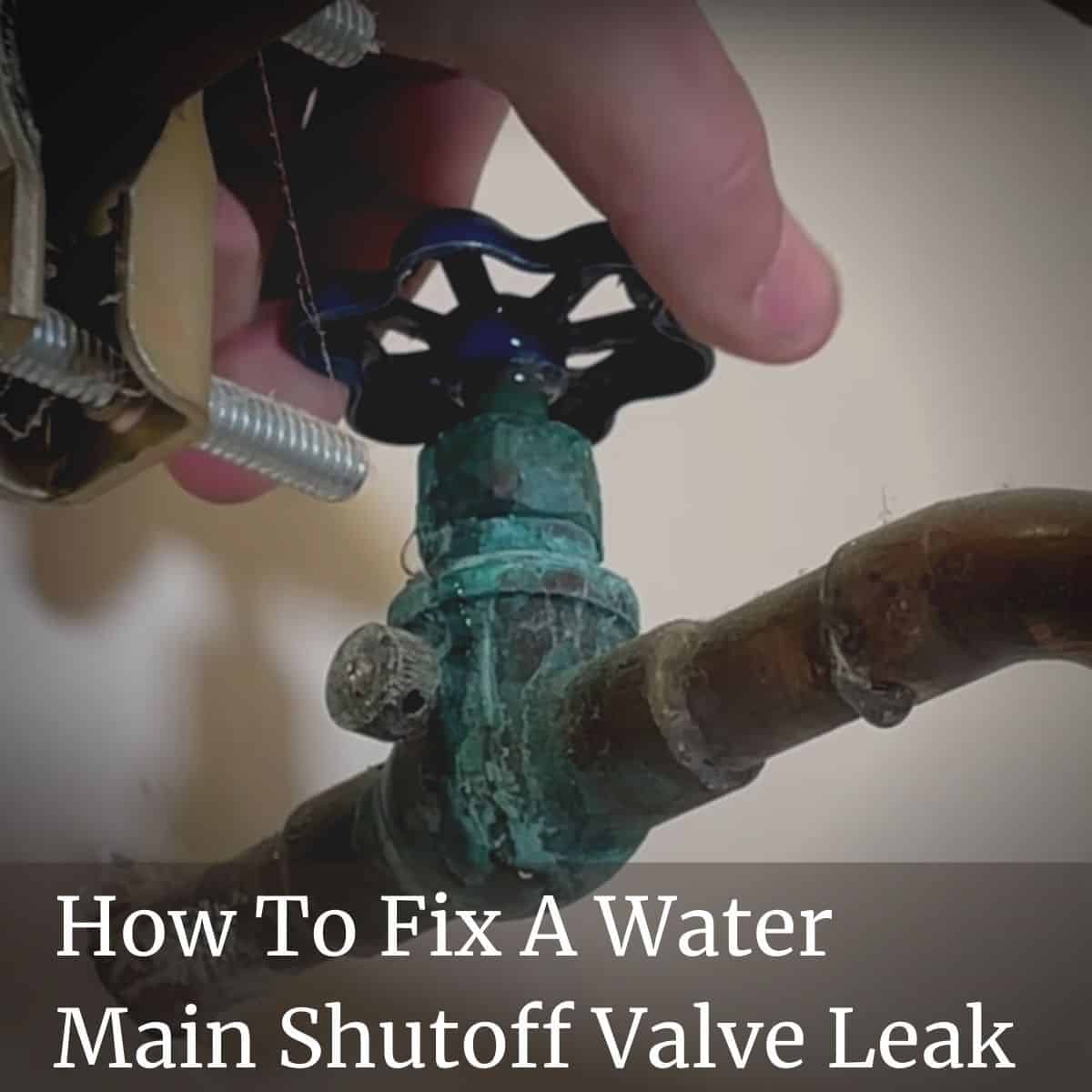
Dealing with a water leak in your home can be one of the scariest things to manage, but it becomes much easier to handle with the right knowledge. This understanding extends even to dealing with water mains, which are a notoriously challenging project to undertake. Still, we are here to educate and help make this task less frightening for homeowners!
Fixing a water main shutoff valve leak starts with determining the cause of the leak. Shut off the main water access from the curb if your city uses that type of access point. Then, begin taking apart and cleaning the mineral deposits from your valve. Finally, use a packing cord to seal that valve more effectively.
There is a lot more that goes into the cleaning and repairing process. If you prefer a visual medium, check out our YouTube video on the subject. If you prefer a written explanation, continue reading to learn all the ins and outs of repairing a water main shutoff valve leak.
Can A Water Shutoff Valve Be Repaired?
Right out the gate, if you are unfamiliar with plumbing, any kind of leak can feel overwhelming. However, even a leak at your main water shutoff valve can be repaired with a bit of effort and know-how. A big part of fixing the water main shutoff valve is restricting the water flow to that point in your plumbing while you do your maintenance.
You can accomplish this by turning off the water main coming into your house which is usually located near the street curb. If you aren’t familiar with this practice, check out our YouTube video! Once you’ve learned how to shut off your water main access from the roadside valve, you’re ready to begin the repairs on your in-house water main valve.
How To Fix A Main Water Shutoff Valve
One of the more common reasons for a leaky water main valve is the actual design. If the water main shutoff valve in your home is one of the kinds that features a wheel handle that you have to turn multiple times to affect the flow of water, then it is connected to a device called a globe or gate valve. A globe valve is very common in older homes and the one that this repair guide will be focused on.
There are a few potential solutions to a leak with this kind of valve, and we will go over them in order from simplest to most complicated. Throughout this guide, keep in mind to be careful when applying torque to your valve’s various fittings. You can easily wind up breaking your plumbing system with accidental excessive force, so use caution and hold the piping in a firm grip while you make adjustments.
Method 1
The first step you take in the troubleshooting process is an attempt to tighten the packing nut. The packing nut is the nut located directly underneath the handle. When you look at it, you will hopefully see some threading underneath it, which indicates that there is room to tighten it slightly.
When you tighten the nut you will be compressing the seal or packing material agains the vavle housing and valve stem. Take your crescent wrench, adjust it to the size, and attempt to make a quarter-turn clockwise, looking at it from the top-down perspective.
I usually leave the water on during this process so I can actively see if the leak stops during the tightening of the packing nut. If you have any additional space to work with, the valve will tighten, and the leak will stop. If so, congratulations, you’re all done! However, if you attempt to tighten the packing nut but it is just at the end of its travel distance already or the leak will not stop then move on to the next possible solution.
Method 2
So if simply tightening the packing nut does not work, the next step in this process is to use Teflon or graphite cord and “pack” underneath the packing nut. Start by using your screwdriver to try to remove the handle attached to the valve stem.
Once the screw is out you might need to work the handle from side to side to loosen it from the valve stem. At this point, the water can still be on at the curb but you would want to make sure you have quick access to turn the water valve off at the curb if a large leak starts during this process.
Next, use your crescent wrench to unscrew the packing nut entirely, and check to see if there is any remaining packing material inside of it. At this point, you will want to use either a vinegar soak or, in my case, plumbing sandpaper to remove the excess mineral deposits or packing materials in there. This will ensure you start with a fresh and clean fitting. It is also very important that your valve stem is free of mineral deposits and smooth to the touch.
Then wrap your packing cord around the stem two or three times, and snip the excess. Next, place the packing nut back onto the stem and tighten it to create a full seal. You should notice that the packing nut won’t go all the way down to the bottom of the thread, which is ideal. You want there to be a bit of space. If it goes too far down, add another layer or two of the packing material and try again.
Do you still have a leak? If so, it’s time to move on to the final solution.
Method 3
The last method essentially involves removing all of the components of the valve and replacing the flat washer at the bottom of the valve stem. Start by shutting off your water supply at the curb and removing the packing nut again. Next, unscrew the bonnet nut, which is the larger one underneath the packing nut. Remember, be cautious as you unscrew this nut as it can be very stiff with mineral deposits.
Once you’ve removed the bonnet nut, you should see the flat washer and seal that actually restricts water flow inside the globe valve. You will want to take the valve stem with seal down to your local hardware store and have them help you source a replacement. We recommend soaking all of your valve components in vinegar or CLR (Calcium, Lime, Rust) liquid cleaner, to remove all the excess mineral deposits.
Once you have your new flat washer in hand, you can reassemble the valve and test your water supply to see if the leak is solved. At this point, you should find that there is no leakage whatsoever, and your in-house water main should be useful again. If you still are having trouble or intend to improve your plumbing system, we recommend installing a ball valve as these types of valves require far less maintenance and are less prone to failure.
The Wrap Up
Isn’t it simple to fix once you understand what the process is? If you can handle fixing a plumbing issue at your home’s primary water source, you should be able to tackle anything from now on. If you need help with any other home maintenance or repair processes, check out our YouTube channel for more videos on helping others with their everyday home repairs.




